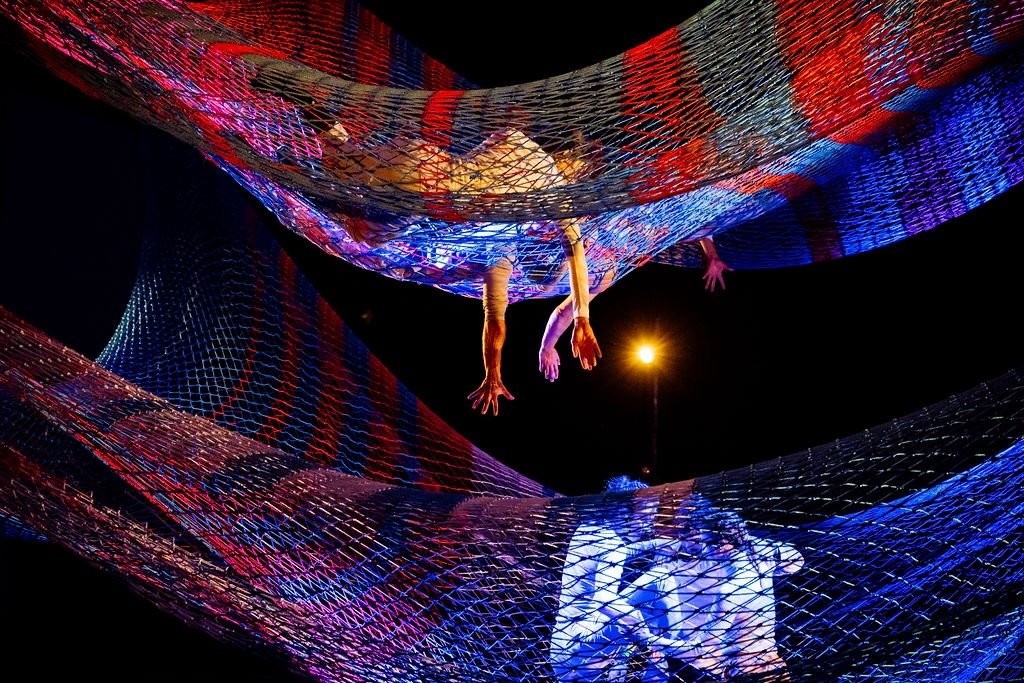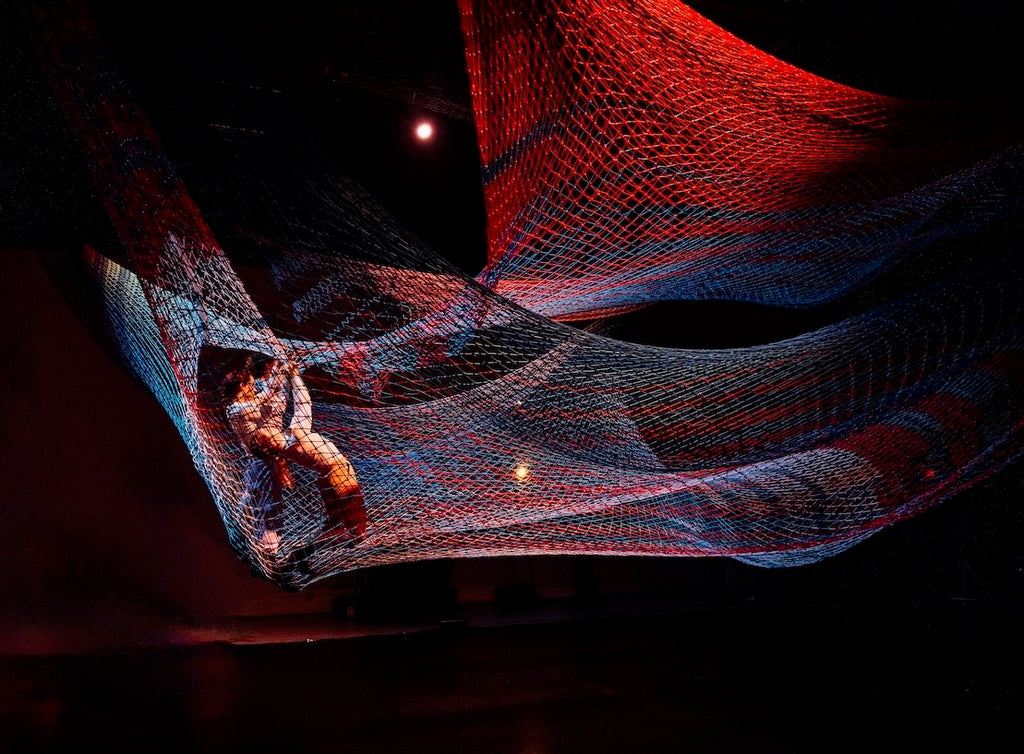Mishima’s Muse
Japan Society’s Yukio Mishima centennial series culminated with “Mishima’s Muse – Noh Theater,” which was actually three programs of traditional noh works that Japanese author Yukio Mishima adapted into modern plays.
Continue Reading
World-class review of ballet and dance.
On one of the longest days of sunlight, the innovative, multi-disciplinary performance outpost in New York’s Hudson Valley, PS21, is presenting a “sneak preview” of a work under development in an onsite, four-week residency. The venue, with its 100 acres of unspoiled landscape, is dedicated to hosting residencies for the incubation of adventurous and oftentimes unclassifiable work. Surrounded by green slopes and leaf-laden trees, the open-air Pavilion Theater has been transformed with a black Marley floor in place of the usual seating area. Occupying the vertical space overhead, are two giant net sculptures by Janet Echelman. Suspended one above the other, they stretch across almost the entire length of the performance area. The audience is seated around this great centerpiece for a special preview of Rebecca Lazier’s “Noli Timere,” which means in Latin “Be Not Afraid.”
In an interview during the last week of the residency, I spoke with Lazier about the development of the production and the social practice it inspires. This conversation has been condensed and edited for clarity.



“Uncommonly intelligent, substantial coverage.”
Your weekly source for world-class dance reviews, interviews, articles, and more.
Already a paid subscriber? Login

Japan Society’s Yukio Mishima centennial series culminated with “Mishima’s Muse – Noh Theater,” which was actually three programs of traditional noh works that Japanese author Yukio Mishima adapted into modern plays.
Continue ReadingThroughout the year, our critics attend hundreds of dance performances, whether onsite, outdoors, or on the proscenium stage, around the world.
Continue ReadingOn December 11th, the Alvin Ailey American Dance Theater presented two premieres and two dances that had premiered just a week prior.
Continue ReadingThe “Contrastes” evening is one of the Paris Opéra Ballet’s increasingly frequent ventures into non-classical choreographic territory.
Continue Reading
comments